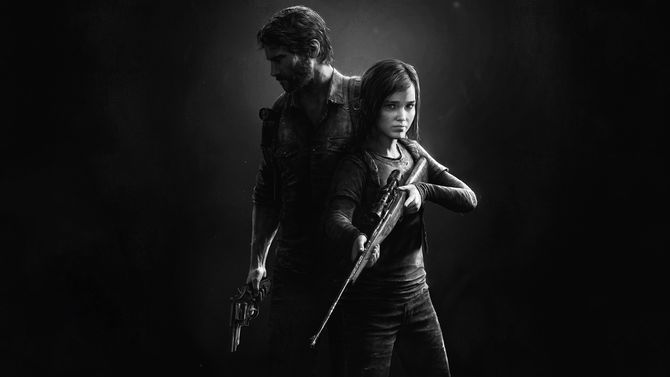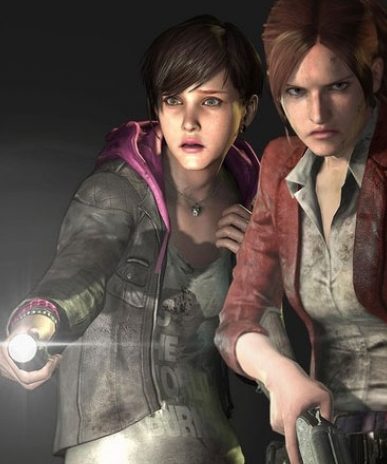Talking about the music and soundtrack in a horror video game is always tricky. Because scary games often rely on audio cues and sound effects to truly scare the player or creep them out, less emphasis is placed on actual music itself, or the melodic stringing of a tune. There are exceptions to the rule. Last month’s breakdown of Akira Yamaoka’s fantastic work on the Silent Hill 2 soundtrack proved that horror games could boast high-quality soundtracks that were actually enjoyable to listen to, while still being scary. But most horror game soundtracks are often forgettable. The Last of Us is one of them.
Don’t take that the wrong way. The Last of Us’s soundtrack might be a forgettable collection overall, but when its music plays within the game itself, the experience becomes that much better. Composed by Academy Award winner Gustavo Santaolalla, the spirit and general direction of this soundtrack is “less is more.” Instead of relying on jarring violins or clanging percussion to accompany jumpscares and elicit a reaction from the player (I’m looking at you, Prey), The Last of Us’s music is largely comprised of more subtle tones with instruments like guitar (acoustic and electric), ronroco, piano, violin, cello, with tribal drums being the most rambunctious of them all.
The post-apocalyptic setting in The Last of Us is a pretty bleak one, as you might imagine. It’s a world infested with fungal zombies, monsters, and human hunters who’ve long since lost their last shred of humanity and would murder their own to survive. Accompanying this frankly miserable situation is a soundtrack that prides itself on restraint. The first piece on the collection is titled The Quarantine Zone (20 Years Later), which is a brief but succinct musical representation of the kind of world Joel and Tess live in now. The guitars are somber, complete with harmonic clashes that illustrate the depressing conflicts that plague the new world.
The soundtrack’s production quality is worth talking about here as well. Santaolalla’s instruments come together in a beautiful blend in all of the tracks, and perhaps the fact that these are mostly live instruments instead of samples also adds to how haunting it all sounds. In The Quarantine Zone, you can hear the reverb of the guitar which lends the track a nice, supple richness to accompany the crestfallen tunes. The presence of acoustic reverb isn’t for everyone; some listeners can’t stand it, but in this case, it plays an important role in bringing The Last of Us’s primal wild world to life.
Things get tense during the game’s combat encounters, as heard in the tracks Hunters and Infected, in which the drums and percussion take the spotlight. Musically, these tracks are superbly put together, but heard out of the context of the scene they help to animate, they’re not particularly special or all that fun to listen to. And that’s the rub when it comes to horror game music. It’s often something that can only be appreciated when you’re in the game itself, elevating the intensity of being chased down by a pack of hunters or infected. They’re a perfect complement to the gameplay, but not all that memorable when judged individually.
Thankfully, the tracks and themes that are memorable are so beautifully composed that they’ll stick with you for a long time to come. In the game’s prologue, we’re treated to a depressing scene that follows Joel’s escape from the city with his young daughter Sarah. Because the game is all about the ugliness and savagery or human nature, the pair are shot at by a soldier, and Sarah is mortally wounded. The musical track accompanying the scene is titled All Gone, and it’s widely regarded to be Sarah’s character theme because of how it comes up each time Joel thinks of his daughter in the game.
It’s another tragic sounding theme, of course, with the painfully slow violin tune and guitars backing it up in certain versions. The most impressive variation of this theme, however, has to be All Gone (No Escape). The track leads with the solo violin before the lower backup instruments join the melancholic fray. It plays near the end of the game when Joel makes his escape from the hospital with Ellie. It’s an appropriate track for so many reasons, not the least of which being the parallels you can draw between this scene and the one in the prologue where he’s running with Sarah in his arms.
On the other end of the spectrum, Vanishing Grace serves as Ellie’s theme, and it’s a much more uplifting one in comparison to All Gone. The track is soft and tentative, and it’s one of the only two pieces in the collection that actually maintains a more hopeful and optimistic tune. And yet, even that optimism is marred by a brief segment in the track where you can hear the melodic tension in the way the notes clash with each other. Vanishing Grace plays during the iconic scene in the Spring chapter where Joel and Ellie find the giraffe, and it’s a profound moment in the game because it comes immediately after Ellie’s harrowing encounter with David.
It’s a beautiful piece of music overall, and it’s also impressive because of the way it perfectly encapsulates Ellie’s development as a character. Her personality changes ever so subtly based on her experiences. While the harmonic clash in Vanishing Grace is my least favorite bit in the track, it’s also necessary for making it feel complete.
Speaking of Ellie, her friendship and relationship with Firefly recruit Riley is also explored in volume 2 of The Last of Us soundtrack. Most of the music in this collection are actually leftover ambient pieces from the main game, such as All Gone (Seasons), which is easily recognized as the main menu theme. But volume 2 also features two very prominent new themes that were played in the Left Behind DLC.
Fleeting, along with its other variant Fleeting (Affection), is perhaps the most recognizable one because of its interesting instrument choice, and the way the different beats and rhythms blend together. The track’s slightly alien and otherworldly sound also feels familiar because of the way Santaolalla gracefully brings the ronroco into the track to accompany the more comforting acoustic guitar.
In both variants of the track, it ends with the disconcerting high note, bringing the piece to a somewhat abrupt conclusion. The Affection variant plays during Left Behind’s end credits, and because of how the story plays out, it’s also a beautifully tragic piece that leaves the player with bittersweet feelings towards the leads. On one hand, it’s a genuinely touching ending because of how both characters have chosen to accept their fates. And on the other, it’s achingly tragic because players already know how this story ends, and we know that Ellie goes on to live with this survivor’s guilt. Fleeting is both touching and detached, just like the rest of the soundtrack.
The other prominent theme, titled Left Behind (which also has a variant called Together), is a more traditional piece in a sense. Santaolalla chooses to incorporate the electric guitars here – something which is rarely seen in the entirety of the soundtrack. Left Behind is a much warmer and much easier track to listen to than Fleeting because of the battling guitars and the way they represent the emotional turmoil that players and Ellie are left with by the end of the DLC. While the Together variant ditches the electric guitar, the acoustic vibes lend it a more personal touch.
Not everything is doom and gloom in The Last of Us, though. As bleak as the post-apocalyptic world is, there is still some happiness and hope to be found in its music, as we heard in Vanishing Grace. Most fans will probably cite The Path (A New Beginning) as the game’s most uplifting track, and well, in a way, it kind of is. The bridge is a lovely medley of plucks and strings, and soft percussion in the background. But it’s difficult to separate this particular track from the game’s ending scene. The one where Joel tells a nasty little lie to try to keep Ellie from tormenting herself. You know the one.
The Path (A New Beginning) is one of the few bright spots in the soundtrack, but it doesn’t come close to the game’s main theme itself, aptly named The Last of Us. This track is a beautiful collision of all of Santaolalla’s most elaborate acoustic instruments. The ronroco is the primary driving force here, with the background guitars lending the track a simple but powerful ostinato. The music is a grim and gritty presentation of the post-apocalyptic setting, sounding all the more savage when the tribal drums kick in. But immediately after that, the track launches into the bridge where the drums make way for a more soothing and comforting acoustic melody.
The Last of Us’s main theme is a whirlwind of emotions that serves as an appropriate close to the game and the player’s journey. It is filled with so much death and sadness, but also lightly punctured with brief moments of respite and happiness, and an ending that’s somewhat hopeful, depending on how you look at it.
The Last of Us’s soundtrack is one that leaves me bored about 80% of the time. So much of it is ambient and incidental music that can’t stand on their own without the game to back it up. But the tunes that do stand out really pack a punch even if you’ve never played the game and don’t fully grasp the context. Santaolalla has produced a truly fantastic horror game soundtrack, but it’s also one that inevitably fails to impress when listening to it separately. Every so often, Santaolalla outdoes himself with tracks that are pure acoustic magic, and if you’ve got the stomach and patience for it, tracks that occasionally dip into the subtle and expressive.


There are no comments.